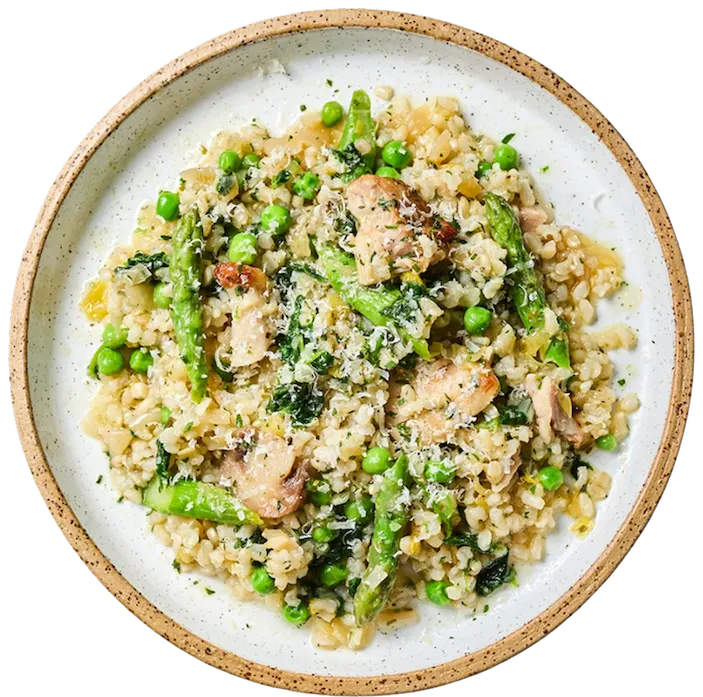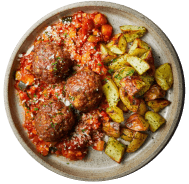Fibre and Gut Health
Why Is Fibre Needed For Gut Health?
Fibre is incredibly important for our overall health, but it can be hard to get enough or know what foods to eat if you have food sensitivities. You may be surprised at how much fibre you need to be eating, but we can help with some top tips on how to incorporate more fibre into your diet.
When we say the F word, we’re talking FIBRE! Dietitian Laura Tilt explains why this nutrient matters to your gut health, and the best types of fibre for sensitive tums.
What is fibre?
Good question. Fibre is a type of carbohydrate that we don’t fully digest. It's found in a range of plant foods - think wholegrains (which contain the entire grain, examples include wholemeal bread and wholegrain pasta), fruits, vegetables, nuts, seeds and pulses (beans, peas and lentils). Your granny might have called it ‘roughage’!.
As a general guide, fibre can be categorised as either insoluble and soluble. Insoluble fibre doesn’t dissolve in water, and works like a broom, sweeping waste through the gut, adding bulk to your stools (poo). Soluble fibre dissolves in water, and turns into a gel-like substance as it moves through the gut. It helps soften your poo and may regulate cholesterol levels.
Why is fibre good for gut health?
Most of us are aware that fibre can help us poop regularly, reducing the chances of constipation. But experts also think high fibre diets protect against bowel cancer, because they lessen the amount of time harmful waste products stay in contact with the lining of our bowel.
But fibre has other important benefits too – like nourishing your gut microbiome. Because fibre isn’t digested and absorbed in the small intestine, it passes to the large intestine where it provides energy for the helpful bacteria that live there. The bacteria feast on fibre, turning it into beneficial compounds that have anti-inflammatory effects and keep the lining of the gut healthy.
Studies show eating a high fibre diet can boost the numbers of helpful bacteria in the gut, whereas not getting enough fibre can have the opposite effect, leading to a less diverse microbiome. Diversity is important, as it seems to be a marker of a resilient and healthy microbiome. This means eating a fibre-rich diet is one step you can take to maintaining a healthy gut.
How much fibre should I eat?
U.K. guidelines recommend that healthy adults (16 +) aim for 30 grams of fibre a day. Most of us don’t get anywhere near that much – last estimates show adults in the UK manage around 18 grams, so there’s room for improvement.
If you’ve no idea how much fibre you’re eating, try keeping a food diary for a couple of days and then add up your fibre intake - most digital food diaries will calculate the fibre intake for you, but you can also check the fibre content of foods online.
If you find your fibre intake needs a little work, pick one change you can begin with (breakfast is always a good place to begin) and then practice this swap for a few days before adding another.
Top tip 1: Fibre content of your food
You can compare the fibre content of foods by checking the ‘per 100 grams’ information – a food is high in fibre if it contains 6 grams of fibre or more, and a source of fibre if it contains 3 grams or more. See how your breakfast cereal compares, or if you could switch your bread to one with higher fibre content.
How can I add more fibre to my diet?
You can increase your fibre intake by…
- Getting five or more servings of fruit and veggies a day
- Adding berries or sliced fruit and seeds to cereal
- Choosing oats for breakfast
- Eating veggies and potatoes with their skins on
- Stirring linseeds into yoghurt
- Choosing wholemeal, wholegrain or rye bread over white bread
- Swapping to wholemeal or lentil pasta instead of choosing white pasta
- Adding frozen vegetables to pasta sauce
- Adding lentils or beans to salads, soups, stews
- Snacking on dried fruit, seeds and nuts
Top tip 2: Take it slowly, and drink plenty of water too If you are increasing your fibre intake, it’s a good idea to do so slowly over the space of a few weeks and make sure you drink plenty of water to give your digestive system time to adjust. Without water, fibre can’t do its job properly. Eating lots more fibre without giving your digestive system time to adjust can give you tummy aches and wind.
What about if I have IBS or a bowel condition?
If you have IBS or a bowel condition like Crohn’s or colitis, eating lots of fibre (particularly insoluble fibre from wholegrain cereals, and breads, seeds and skins) isn’t typically helpful, as it can make symptoms like wind, bloating and diarrhoea worse.
Some types of fibre are also more readily fermented than others - which means they are more capable of contributing to gas production, and more likely to cause pain in IBS sensitive tums. Examples of highly fermentable fibres include those found in beans, lentils, onions and wheat and in cooked and cooled pasta and potato. Reducing portion sizes of these foods can therefore be helpful.
As a general rule, foods rich in soluble fibre (which are also poorly fermented!) tend to be the best type of fibre for people with IBS. If you’re unsure where to start, advice from an experienced IBS dietitian can help you to adjust the amount of fibre in your diet according to your symptoms.
I’m following the low FODMAP diet, how can I get enough fibre?
It can be more challenging to get enough fibre when following on a low FODMAP diet, but these tips can help
Try oats for breakfast. A 50g (half cup) serving of rolled oats are low in FODMAPs.
Aim for two serves of low FODMAP fruit each day; raspberries, rhubarb, kiwifruit, oranges, strawberries, blueberries, pineapple, passion fruit are all good choices
Aim for 3 serves of low FODMAP vegetables each day; try carrots (skin on), green beans, potato (skin on), spinach, courgettes, aubergine or peppers
Compare the fibre content (per 100g) of low FODMAP breads and cereals. A high fibre option will contain 6 grams or more of fibre per 100 grams. Examples include quinoa, brown rice, gluten free multigrain bread, rice bran, oat-bran, and porridge (oats).
Add small amounts of canned lentils/ canned chickpeas to a soup, stew or salad. A ‘green’ or low FODMAP serve is 45 grams of canned chickpeas or ½ cup of canned lentils. Rinse them well before you use them as this can reduce the fodmap content further.
Try a small handful of nuts or seeds for a snack or a couple of couple of oatcakes with peanut butter
Add flaxseeds (linseeds) or chia seeds to your breakfast cereal or a low FODMAP yoghurt
Where can I learn more?
The British Dietetic Association has a great fact sheet on fibre here and a guide to IBS and diet here.
If you’re looking for IBS specific advice around fibre the Monash University blog posts around soluble fibre and fibre supplements are excellent too.
If you think you may need some individualised advise around your diet and fibre, please see a registered dietitian. They are trained to make personalised suggestions. based on your diet and health needs.
related content
more content: Gut Health
browse our ranges.
choose from one of our ranges or personalise your own menu from 60+ meals.
- low FODMAP

- eat well, live well programme

- gluten free

- high protein

- weight management

- ibs

- lowest calorie

- lower carbs

- mediterranean

- smaller range

- pcos

- lean + lighter

- menopause

- heart healthy

- plans

- full menu

- gift cards
- take the quiz